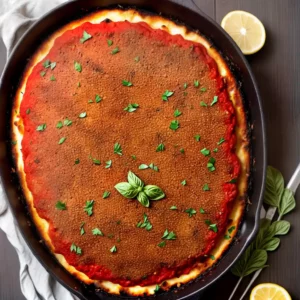How Many Milliliters in an Ounce
Have you ever wondered how many milliliters are in an ounce? In this measurement conversion guide, I will provide you with all the information you need to convert between these two units of volume measurement.
How Many Milliliters in an Ounce – Key Takeaways
- There are 29.573 milliliters in a fluid ounce.
- Ounces are an Imperial measurement, while milliliters are a metric unit of measurement.
- The origin of ounces is the Roman term “uncia,” while milliliters were defined as 1/1000th of a liter.
- There are conversion charts available for converting liters or milliliters to fluid ounces and vice versa.
- Using the correct conversion factor is crucial for accurate measurements.
The Importance of Measurement Conversion in Cooking and Baking
As a master chef, I know the importance of precise measurements in cooking and baking. Accurate conversion between milliliters and ounces is crucial for following recipes, maintaining the right ratios of ingredients, and creating delicious dishes.
Whether it’s measuring liquids, such as water or milk, or dry ingredients, like flour or sugar, converting between milliliters and ounces ensures that you are using the correct amount in your recipes. This is especially important when working with international recipes that specify metric measurements.
Imagine trying to bake a cake and mistakenly adding too much flour because you didn’t convert the milliliters to ounces accurately. Your cake could turn out dense and dry instead of light and fluffy. Or, if you’re making a delicate sauce and misjudge the conversion, it could end up too watery or too thick, ruining the overall flavor and texture.
To help you with these conversions, here is a simple conversion table:
| Fluid Ounces (fl oz) | Milliliters (ml) |
|---|---|
| 1 | 29.57 |
| 2 | 59.15 |
| 3 | 88.72 |
With this table, you can easily convert between milliliters and ounces, ensuring that your culinary creations turn out perfectly every time. It’s a handy reference to have in your kitchen, along with a conversion calculator or a smartphone app that can quickly convert measurements on the go.
Remember, precise measurements are the foundation of great cooking and baking. So the next time you’re whipping up a recipe, take a moment to convert the measurements accurately. Your taste buds will thank you!

Before we dive into the conversion factors, let’s understand what milliliters and ounces are and how they fit into different measurement systems. Milliliters and ounces are units of volume measurement, but they belong to different measurement systems: metric and imperial, respectively.
The metric system, which includes milliliters, is widely used around the world, while the imperial system, which includes ounces, is primarily used in the United States and a few other countries. In the metric system, milliliters are derived from the liter, which was introduced in France in 1795. A milliliter is defined as one-thousandth of a liter or the volume of one gram of pure water.
Ounces, on the other hand, have a more varied origin. The modern ounce comes from Britain, where a dry ounce weighs 28.35 grams and a fluid ounce is 1/16th of a pint. The term “ounce” actually stems from the Roman term “uncia,” which was used to measure both length and weight.

To better understand the conversion between milliliters and ounces, it’s important to note the different conversion factors. For imperial fluid ounces, 1 fluid ounce is equal to approximately 28.4 milliliters. However, for US fluid ounces, 1 fluid ounce is equal to approximately 29.6 milliliters. Using the correct conversion factor is crucial when working with measurements that require accuracy.
In conclusion, milliliters and ounces are units of volume measurement that belong to different measurement systems. While milliliters are part of the metric system, ounces are part of the imperial system. Understanding their historical origins and conversion factors is essential for accurately converting between the two. Overall, there are approximately 29.573 milliliters in an ounce.
The History of Ounces and Milliliters
The origins of ounces and milliliters can be traced back to different historical contexts, with ounces originating from ancient Rome while milliliters were introduced during the French metrication process. Ounces, derived from the Roman term “uncia,” were initially used to measure both length and weight. Over time, the measurement system evolved, and ounces became an integral part of the British imperial system.
On the other hand, milliliters were born out of the need for a decimal-based metric system. In 1795, during the French Revolution, the liter was introduced as a unit of volume measurement. A milliliter was defined as a thousandth part of a liter, making it equivalent to the volume of one gram of pure water. This precise definition made milliliters a valuable tool in scientific and medical fields.
“The liter was introduced in France in 1795, and a milliliter was defined as 1/1000th of a liter or the volume of one gram of pure water.”
Today, the conversion between ounces and milliliters is essential, particularly in recipes that use metric measurements. With the increasing globalization of cuisines and the popularity of international recipes, knowing how to convert between these two units of measurement is a valuable skill for home cooks and professional chefs alike.
Conversion charts and tables are readily available to make the process of converting ounces to milliliters and vice versa simple and accurate. When converting imperial fluid ounces to milliliters, it is important to remember that 1 fluid ounce is approximately equal to 28.4 milliliters. For US fluid ounces, the conversion factor is slightly different, with 1 fluid ounce being equal to approximately 29.6 milliliters. Choosing the correct conversion factor ensures precise measurements and successful culinary endeavors.
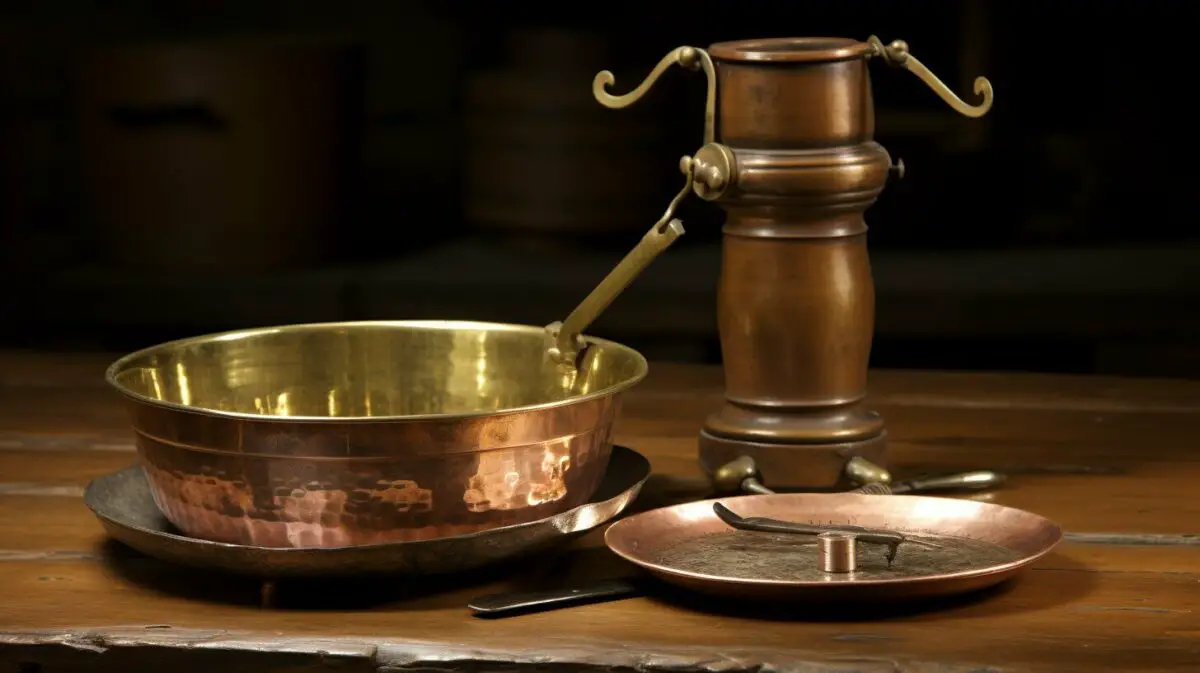
Converting Ounces to Milliliters
When converting ounces to milliliters, the conversion factor to remember is 29.573 milliliters per fluid ounce. This conversion is necessary because ounces and milliliters belong to different measurement systems. Ounces are part of the Imperial system, while milliliters are a metric unit of measurement. It is crucial to use the correct conversion factor, as inaccuracies can affect the final outcome of recipes or other measurements that require precision.
To simplify the conversion process, conversion charts and tables are available. These resources provide a comprehensive list of conversions between liters or milliliters and fluid ounces, making it easier to determine the equivalent measurement. Here is a table showing the conversion of various amounts of ounces to milliliters:
| Ounces | Milliliters |
|---|---|
| 1 | 29.573 |
| 2 | 59.147 |
| 3 | 88.720 |
| 4 | 118.294 |
In addition to the conversion table, online converters can also be used to quickly and accurately convert ounces to milliliters. These converters provide a user-friendly interface, allowing you to input the desired amount in ounces and instantly obtain the corresponding measurement in milliliters. It is essential to double-check the output to ensure the accuracy of the conversion.
Remember, the conversion factor of 29.573 milliliters per fluid ounce is the standard conversion for US fluid ounces. For imperial fluid ounces, the conversion factor is slightly different, with 1 fluid ounce equaling 28.4 milliliters. Using the correct conversion factor is crucial for obtaining accurate measurements, especially in recipes or scientific applications where precision is vital.
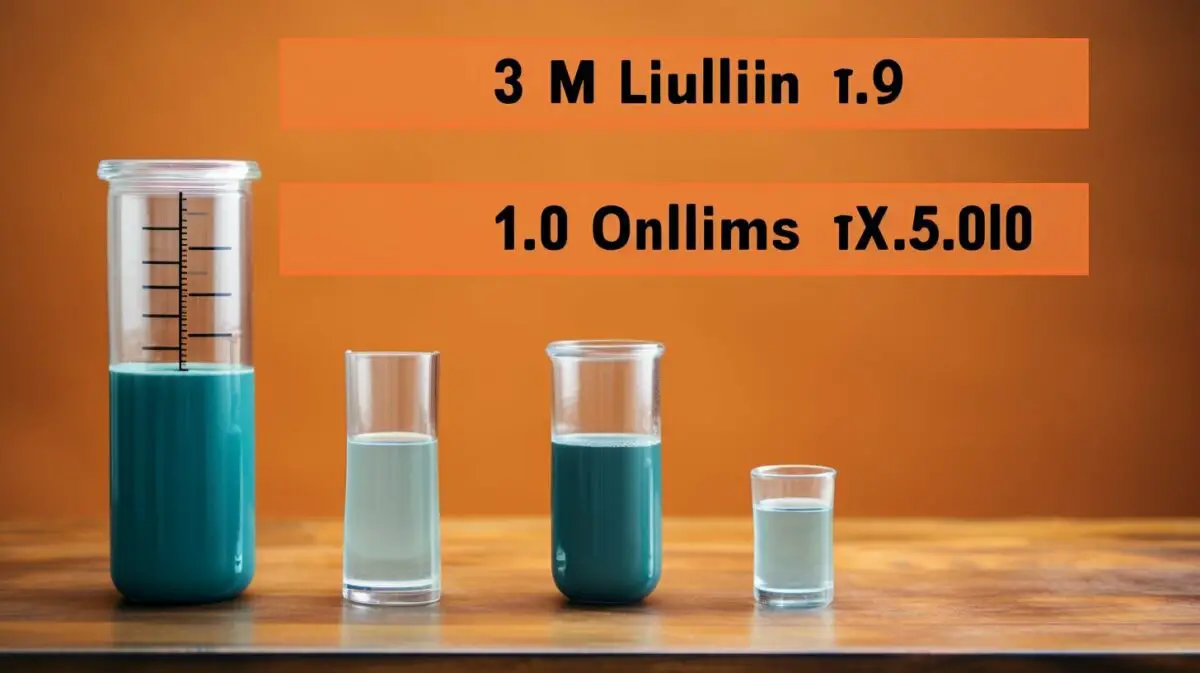
To convert milliliters to ounces, you can use the conversion factor of 1 fluid ounce equals 29.573 milliliters. This conversion is important when dealing with recipes or other measurements that require accuracy. Whether you’re working in the kitchen or in a scientific setting, knowing how to convert between milliliters and ounces can ensure that you achieve precise results.
For example, if a recipe calls for 250 milliliters of liquid and you want to convert it to ounces, you can use the conversion factor: 250 milliliters x (1 fluid ounce/29.573 milliliters) = 8.4535 fluid ounces. Rounding to the nearest decimal place, the equivalent measurement is approximately 8.5 fluid ounces.
Having a conversion calculator or access to conversion charts can also be helpful for quick and accurate conversions. These resources allow you to easily convert milliliters to ounces and vice versa for various measurement scenarios. It’s essential to use the correct conversion factor based on the type of fluid ounce being used, as there are slight variations between the UK and US fluid ounce measurements.
| Milliliters | Fluid Ounces (UK) | Fluid Ounces (US) |
|---|---|---|
| 50 | 1.76 | 1.69 |
| 100 | 3.52 | 3.38 |
| 250 | 8.81 | 8.45 |
| 500 | 17.63 | 16.91 |
| 1000 | 35.27 | 33.81 |
By using the correct conversion factor and utilizing tools like conversion calculators or charts, you can easily convert milliliters to ounces for any measurement needed. Remember the conversion factor of 1 fluid ounce equals 29.573 milliliters, and you’ll be able to confidently work with both milliliters and ounces in any situation.

It’s important to note that there are slight variations in the conversion factor for different types of fluid ounces. When converting fluid ounces to milliliters, it is crucial to use the correct conversion factor based on the type of fluid ounce being used. The two main types of fluid ounces are the US fluid ounce and the UK fluid ounce.
For the US fluid ounce, the conversion factor is 1 fluid ounce equals 29.6 milliliters. This is the most commonly used conversion factor in the United States. It is important to use this conversion factor when working with recipes or measurements that follow the US customary system.
On the other hand, the UK fluid ounce has a slightly different conversion factor. 1 UK fluid ounce equals 28.4 milliliters. This conversion factor is used in the United Kingdom and other countries that follow the British imperial system. It is essential to use the appropriate conversion factor when dealing with measurements from these regions.
To better understand the conversion between fluid ounces and milliliters, refer to the table below:
| Fluid Ounces (fl oz) | Milliliters (ml) |
|---|---|
| 1 US Fluid Ounce | 29.6 ml |
| 1 UK Fluid Ounce | 28.4 ml |
By using the appropriate conversion factor, you can accurately convert between fluid ounces and milliliters. Remember to choose the correct conversion factor based on the type of fluid ounce being used in your measurement or recipe. Understanding these conversion factors will ensure precise measurements and successful culinary endeavors.
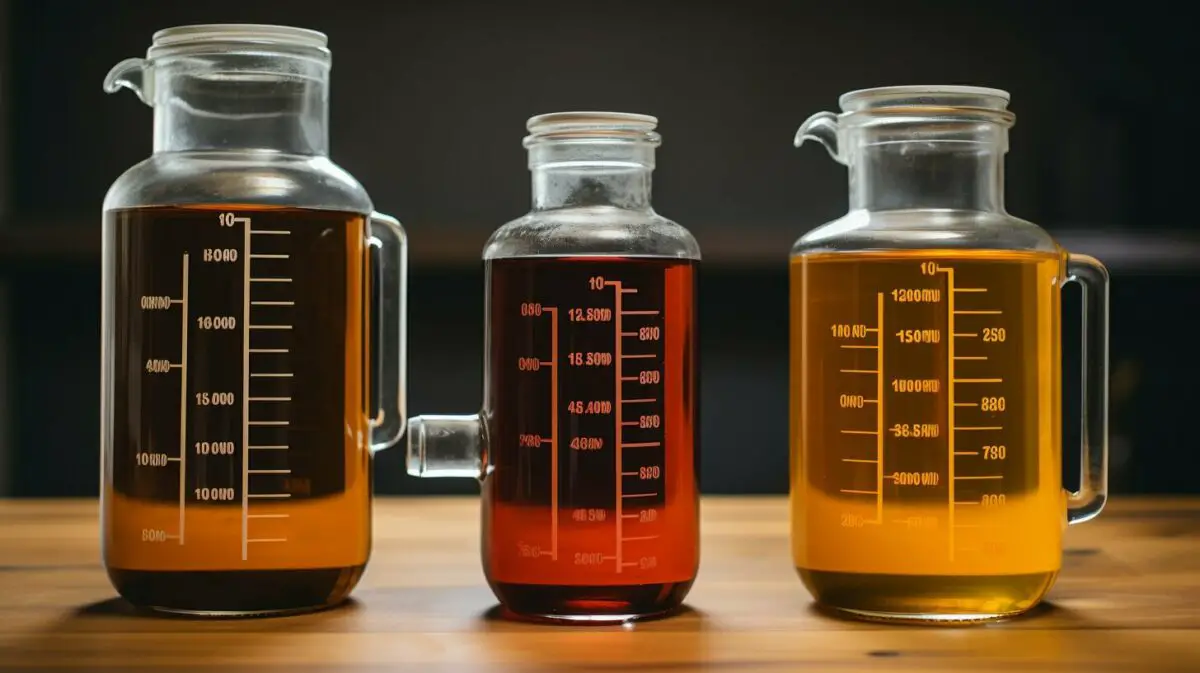
- Always double-check the unit of measurement specified in your recipe or the context in which you are working to determine whether it refers to a US fluid ounce or a UK fluid ounce.
- When in doubt, it is advisable to clarify the type of fluid ounce being referenced to ensure accurate conversions.
- Using conversion charts or online converters can be helpful in quickly and accurately converting between fluid ounces and milliliters.
Using Conversion Charts and Converters
Conversion charts and converters can be handy tools when you need to convert between milliliters and ounces. Whether you’re working in the kitchen, conducting scientific experiments, or simply trying to understand different measurement systems, having access to accurate conversion information is crucial. These resources can save you time and help you ensure accurate measurements for your specific needs.
When using conversion charts, you can easily find the conversion factor between milliliters and ounces. Simply locate the value in milliliters or ounces that you want to convert and cross-reference it with the corresponding value in the other unit of measurement. This allows you to convert quickly and efficiently without the need for complex calculations.
If you prefer a more interactive approach, online converters are also available. These tools allow you to enter the value you want to convert and instantly receive the converted result. They often provide options for different types of ounces, such as fluid ounces in the US or UK measurement systems, ensuring precision and accuracy in your conversions.
Having access to conversion charts and converters simplifies the process of switching between milliliters and ounces. Whether you’re following a recipe, working on a scientific project, or simply curious about different measurement systems, these tools can help you navigate the complexities and ensure accurate measurements every time.
Conversion Table: Milliliter to Ounce
Below is a conversion table that shows the equivalent values between milliliters and ounces:
| Milliliters (ml) | Ounces (fl oz) |
|---|---|
| 10 | 0.338 |
| 20 | 0.676 |
| 30 | 1.014 |
| 40 | 1.352 |
| 50 | 1.691 |

By referring to this table or using online converters, you can convert milliliters to ounces and vice versa with ease. Whether you’re cooking, conducting scientific experiments, or simply exploring different measurement systems, accurate conversions are essential for achieving the desired results. So, make sure to keep these conversion tools handy whenever you need to switch between milliliters and ounces.
Understanding the Significance of Accurate Measurements
Accurate measurements are vital in the culinary world as they ensure the right balance of ingredients, proper cooking times, and consistent results. Whether you’re baking a cake or preparing a savory dish, precise measurements play a crucial role in achieving culinary perfection.
When it comes to cooking and baking, every ingredient has a specific role to play. Each measurement contributes to the overall taste, texture, and appearance of the final dish. A slight deviation from the recommended measurement can significantly alter the outcome.
Understanding weight, density, and substance ratios is essential to maintaining the integrity of a recipe. By measuring ingredients accurately, you can strike the right balance and achieve the desired flavors and textures. Accurate measurements ensure that your dishes turn out consistently delicious each time you prepare them.
To illustrate the importance of accurate measurements, imagine using too much flour in a cake recipe. The excess flour would make the cake dense and dry, ruining its delicate crumb and flavor. Similarly, an incorrect measurement of salt may render a dish unbearably salty. Precise measurements help you control these variables and deliver exceptional culinary creations.

- Consistent Results: Accurate measurements ensure that your dishes turn out the same way each time you prepare them, giving you predictable and reliable outcomes.
- Better Flavor and Texture: Precise measurements contribute to the perfect balance of ingredients, enhancing the flavor and texture of your culinary creations.
- Recipe Replication: Accurate measurements allow you to replicate recipes precisely, making it easier to recreate your favorite dishes or share them with others.
- Professional Standards: Accurate measurements are essential for professional chefs and bakers who strive to maintain consistent quality in their culinary masterpieces.
| Ingredient | Accuracy Required |
|---|---|
| Leavening Agents (baking powder, yeast) | Crucial – too much or too little can affect the rise and texture of baked goods |
| Salt | Crucial – the right amount enhances flavors, while too much can be overpowering |
| Flour | Precise – too much can make baked goods dense, while too little can result in a flat texture |
| Sugar | Somewhat flexible – sweetness can be adjusted according to personal taste |
Accurate measurements lay the foundation for culinary success. Investing in a good set of measuring tools, such as measuring cups, spoons, and scales, is essential for any aspiring home cook or professional chef. Remember, precision in measurement translates to perfection on the plate!
The Role of Metric and Imperial Systems in Measurements
Understanding the metric system, US customary system, and British imperial system is essential for comprehending the conversion between fluid ounces and milliliters. These systems define the units of measurement used in different regions, each with its own unique characteristics and historical origins.
In the metric system, milliliters are a commonly used unit for measuring volume. This system, developed in France in 1795, is based on powers of ten, making it straightforward to convert between different metric units. The milliliter is defined as one-thousandth of a liter, or the volume occupied by one gram of pure water. This system is widely used in scientific and international contexts, providing a universal standard for measurements.
In contrast, the US customary system and British imperial system both utilize fluid ounces as a unit of volume measurement. The fluid ounce is a part of the larger avoirdupois system, which is still used in the United States, alongside the metric system. The origin of the fluid ounce can be traced back to the Roman term “uncia,” which was used to measure length and weight. In modern usage, a fluid ounce is defined as 1/16th of a pint and varies slightly between the US and UK measurements.
Conversion Factors for Fluid Ounces to Milliliters
| Fluid Ounce Type | Conversion Factor |
|---|---|
| US fluid ounce | 1 fl oz = 29.6 ml |
| Imperial fluid ounce | 1 fl oz = 28.4 ml |
When converting fluid ounces to milliliters, it is crucial to utilize the appropriate conversion factor for the specific type of fluid ounce. Using the incorrect factor can result in inaccurate measurements, particularly when precision is required in recipes or scientific calculations. Being aware of the differences between these systems enables you to make accurate conversions for your specific needs.

Let’s compare the conversions between fluid ounces and milliliters to better understand the differences and ensure accuracy in all your measurements. To convert fluid ounces to milliliters, it’s important to know the conversion factors for different types of fluid ounces. For imperial fluid ounces, the conversion factor is 1 fluid ounce equals approximately 28.4 milliliters, while for US fluid ounces, the conversion factor is 1 fluid ounce equals approximately 29.6 milliliters.
Here’s a table summarizing the conversions:
| Fluid Ounces | Milliliters |
|---|---|
| 1 (Imperial) | 28.4 |
| 1 (US) | 29.6 |
Using the correct conversion factor is crucial to ensure accuracy in your measurements. For example, if a recipe calls for 10 fluid ounces of liquid and you mistakenly use the US conversion factor instead of the imperial one, you would end up using approximately 296 milliliters instead of the correct 284 milliliters, which could significantly affect the outcome of your recipe.
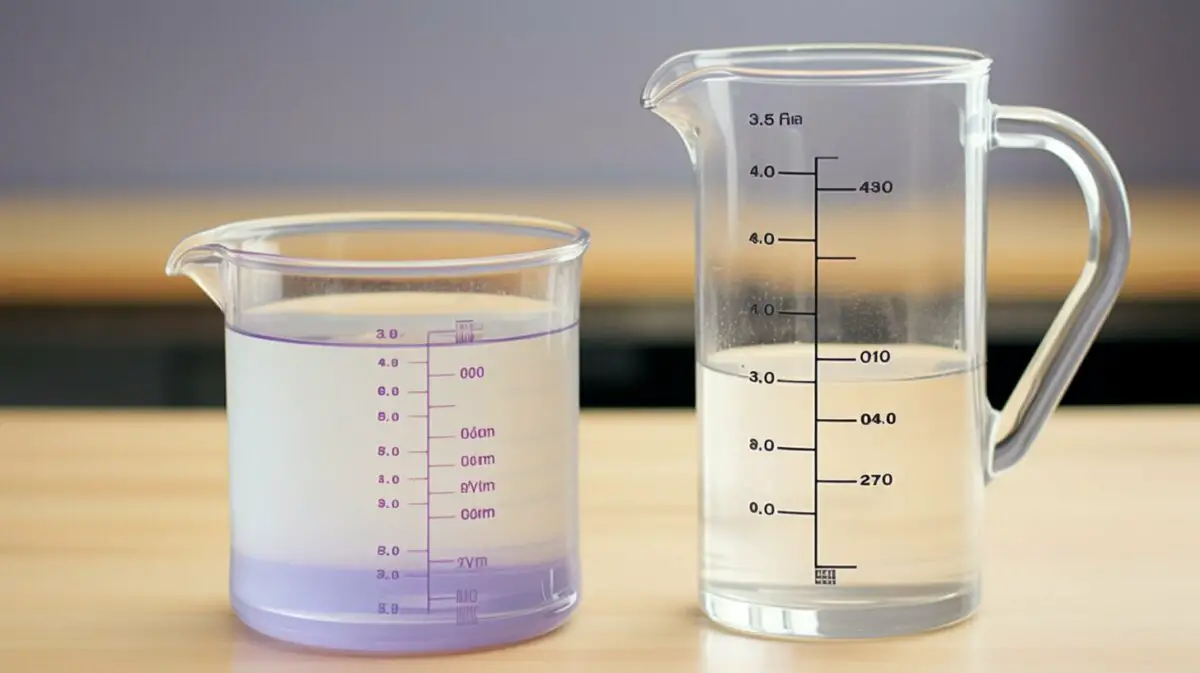
So whether you’re using imperial or US fluid ounces, it’s essential to double-check your conversions to get precise measurements. Remember, 1 fluid ounce does not always equal 30 milliliters, but rather 28.4 milliliters for imperial fluid ounces or 29.6 milliliters for US fluid ounces. By being mindful of these slight variations, you can ensure accuracy and achieve the desired results in your cooking and baking endeavors.
Milliliters to Fluid Ounces Conversion: A Comparison
When converting milliliters to fluid ounces, it’s important to be aware of the conversion factors for different types of fluid ounces. The conversion between milliliters and fluid ounces can vary slightly depending on whether you’re using the US fluid ounce or the UK fluid ounce. To ensure accurate measurements, it’s crucial to use the correct conversion factor.
For US fluid ounces: 1 fluid ounce is equal to approximately 29.6 milliliters. This conversion factor is commonly used in the United States for recipes and everyday measurements. It’s important to note that this conversion is specific to the US fluid ounce and may not be applicable to other fluid ounce measurements.
For UK fluid ounces: 1 fluid ounce is roughly equivalent to 28.4 milliliters. This conversion factor is commonly used in the United Kingdom. It’s essential to differentiate between the US and UK fluid ounces to ensure accurate measurements when following recipes or converting between different measurement systems.
To summarize, when converting milliliters to fluid ounces, the conversion factor will depend on whether you’re using the US or UK fluid ounce. It’s crucial to use the correct conversion factor to achieve accurate and precise measurements in cooking, baking, and any other context that requires volume conversions.
| Milliliters (ml) | US Fluid Ounces (fl oz) | UK Fluid Ounces (fl oz) |
|---|---|---|
| 10 ml | 0.34 fl oz | 0.35 fl oz |
| 50 ml | 1.69 fl oz | 1.76 fl oz |
| 100 ml | 3.38 fl oz | 3.52 fl oz |
| 500 ml | 16.91 fl oz | 17.6 fl oz |
These conversion factors can be used as a reference when converting milliliters to fluid ounces. However, it’s always recommended to double-check the specific conversion factor based on the type of fluid ounce being used. This ensures accurate and precise measurements, especially when working with recipes or specific measurement requirements.
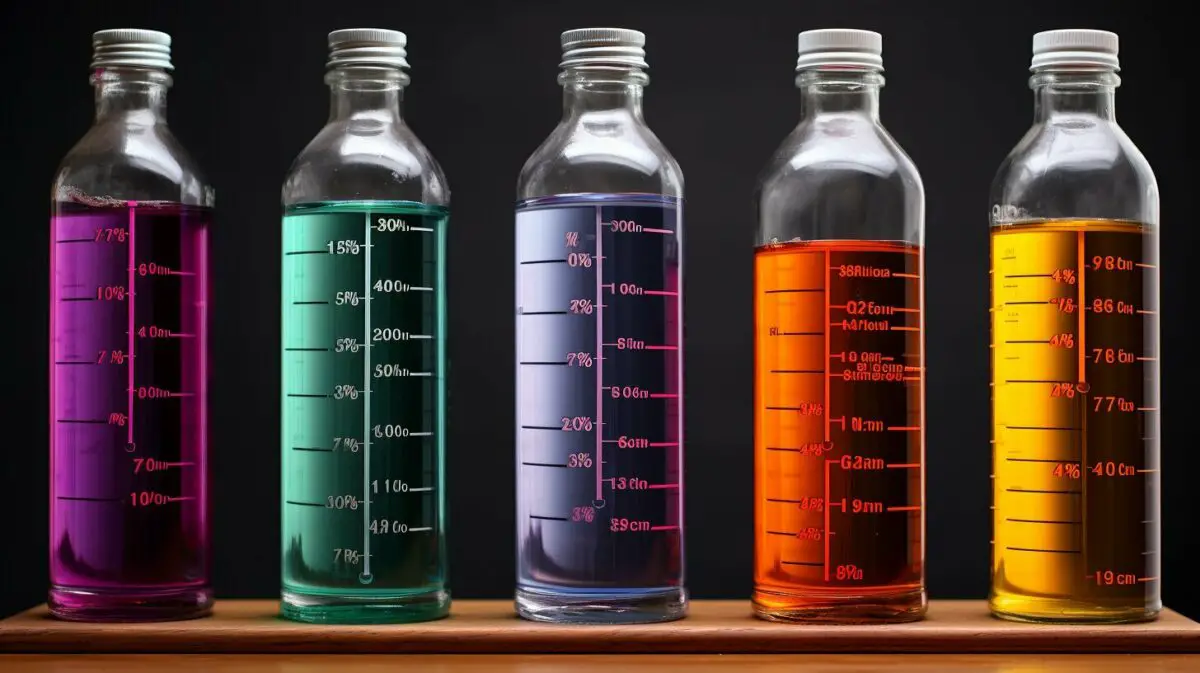
Liquid measurements and volume conversions are fundamental aspects of cooking, baking, and various other activities that involve dealing with fluids. Whether you are following a recipe or simply trying to measure the right amount of liquid, understanding the conversion between different units of measurement is crucial for achieving accurate and consistent results. In particular, understanding the relationship between milliliters and fluid ounces is essential.
To convert ounces to milliliters, there are 29.573 milliliters in a fluid ounce. This conversion is necessary because ounces are an Imperial measurement, while milliliters are a metric unit of measurement. The conversion between the two is becoming increasingly important, especially in recipes that use metric measurements.
The origin of ounces can be traced back to the Roman term “uncia,” which was used to measure both length and weight. Over time, the ounce evolved and became a widely used measurement in various systems, including the British imperial system. In this system, a dry ounce weighs 28.35 grams, while a fluid ounce is equal to 1/16th of a pint.
The metric system introduced the liter in France in 1795, providing a standardized unit of measurement for volume. Within this system, the milliliter was defined as 1/1000th of a liter or the volume of one gram of pure water. This made it easier to measure and convert volumes accurately.
| Fluid Ounces (fl oz) | Milliliters (ml) |
|---|---|
| 1 fl oz (Imperial) | 28.4 ml |
| 1 fl oz (US) | 29.6 ml |
When working with measurements that require precision, it is crucial to use the correct conversion factor. Conversion charts and online converters are available to simplify the process of converting between liters or milliliters and fluid ounces. By understanding these conversions, you can confidently follow recipes, create delicious dishes, and ensure the perfect balance of flavors.

Conclusion – How Many Milliliters in an Ounce
In conclusion, knowing how to convert between milliliters and ounces is essential for accurate measurements in cooking, baking, and other activities that require precise volume measurements. The conversion between these two units is necessary due to the difference between the Imperial and metric systems of measurement. With 29.573 milliliters in a fluid ounce, it is crucial to use the correct conversion factor when working with recipes or other measurements.
The origin of ounces can be traced back to the ancient Roman term “uncia,” which was used to measure both length and weight. Over time, ounces evolved into the modern measurement we know today, with a fluid ounce being 1/16th of a pint. On the other hand, milliliters are a metric unit of measurement, with one milliliter defined as 1/1000th of a liter or the volume of one gram of pure water.
To ensure accurate conversions between milliliters and ounces, conversion charts are available for reference. It is important to note that there are slight variations in the conversion factor for different types of fluid ounces. For imperial fluid ounces, the conversion is 1 fl oz = 28.4 ml, while for US fluid ounces, it is 1 fl oz = 29.6 ml. Using the correct conversion factor is crucial when precision is required in measurements.
Whether you’re following a recipe, measuring ingredients, or working with liquids, understanding how to convert between milliliters and ounces is essential. Accurate measurements can make a significant difference in the outcome of your culinary creations. So, next time you come across a recipe that uses milliliters or ounces, be sure to use the correct conversion and achieve delicious results!
FAQ – How Many Milliliters in an Ounce
Q: How many milliliters are in an ounce?
A: There are 29.573 milliliters in a fluid ounce.
Q: Why is conversion between ounces and milliliters important?
A: The conversion is necessary because ounces are an Imperial measurement, while milliliters are a metric unit of measurement. It is important to use the correct conversion when working with measurements that require accuracy.
Q: Where do ounces and milliliters come from?
A: The origin of ounces is from the Roman term “uncia,” which was used to measure length and weight. The modern ounce comes from Britain, with a dry ounce weighing 28.35 grams and a fluid ounce being 1/16th of a pint. The liter was introduced in France in 1795, and a milliliter was defined as 1/1000th of a liter or the volume of one gram of pure water.
Q: How do I convert ounces to milliliters?
A: To convert ounces to milliliters, multiply the number of ounces by 29.573. For example, if you have 5 ounces, the conversion would be 5 x 29.573 = 147.865 milliliters.
Q: How do I convert milliliters to ounces?
A: To convert milliliters to ounces, divide the number of milliliters by 29.573. For example, if you have 150 milliliters, the conversion would be 150 / 29.573 = 5.07 ounces.
Q: Are there different conversion factors for fluid ounces?
A: Yes, there are different conversion factors for fluid ounces. For imperial fluid ounces, the conversion is 1 fl oz = 28.4 ml, while for US fluid ounces, it is 1 fl oz = 29.6 ml.
Q: Can I use conversion charts or converters?
A: Yes, conversion charts and converters are available to quickly and accurately convert between milliliters and ounces. They can be useful tools in ensuring precise measurements.
Q: Why is accuracy in measurements important?
A: Accurate measurements are crucial in cooking and baking to maintain the right ratios and proportions of ingredients. They contribute to the success and consistency of recipes.
Q: How do metric and imperial systems relate to ounces and milliliters?
A: Ounces belong to the British imperial system, while milliliters are part of the metric system. Understanding the differences between these systems helps in correctly converting between ounces and milliliters.
Q: How do I convert between different types of fluid ounces?
A: To convert between different types of fluid ounces, you can refer to conversion tables or use online converters. The conversion factors may vary slightly, so it’s important to use the appropriate factor for accurate conversions.
Q: Why is it important to understand liquid measurements and volume conversions?
A: Understanding liquid measurements and volume conversions is essential for various contexts, including cooking, baking, and scientific experiments. Accurate measurements ensure the desired outcome and consistency in results.
Source Links
- https://www.omnicalculator.com/conversion/oz-ml-converter
- https://www.metric-conversions.org/volume/us-ounces-to-milliliters.htm
Related Recipes:
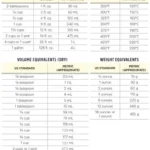 How Many Cups Are in a Liter: Unlocking the Mystery
How Many Cups Are in a Liter: Unlocking the Mystery
 How Many Milliliters in a Quart? (Perfect Measurement Conversion Guide)
How Many Milliliters in a Quart? (Perfect Measurement Conversion Guide)
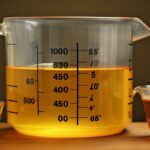 How Many Ounces Are in 750 ml? (Measurement Conversion Guide)
How Many Ounces Are in 750 ml? (Measurement Conversion Guide)
 How Many Milliliters in a Pint? (Measurement Conversion Guide)
How Many Milliliters in a Pint? (Measurement Conversion Guide)
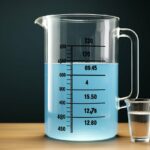 How Many Milliliters in a Gallon? (Perfect Measurement Conversion Guide)
How Many Milliliters in a Gallon? (Perfect Measurement Conversion Guide)
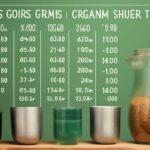 How Many Grams Are in an Ounce? (Perfect Measurement Conversion Guide)
How Many Grams Are in an Ounce? (Perfect Measurement Conversion Guide)
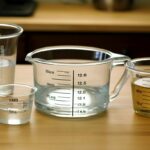 How Many Cups Are in a Liter? (Perfect Measurement Conversion Guide)
How Many Cups Are in a Liter? (Perfect Measurement Conversion Guide)
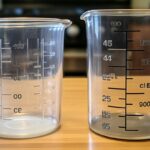 How Many Quarts in a Liter? (Perfect Measurement Conversion Guide)
How Many Quarts in a Liter? (Perfect Measurement Conversion Guide)





